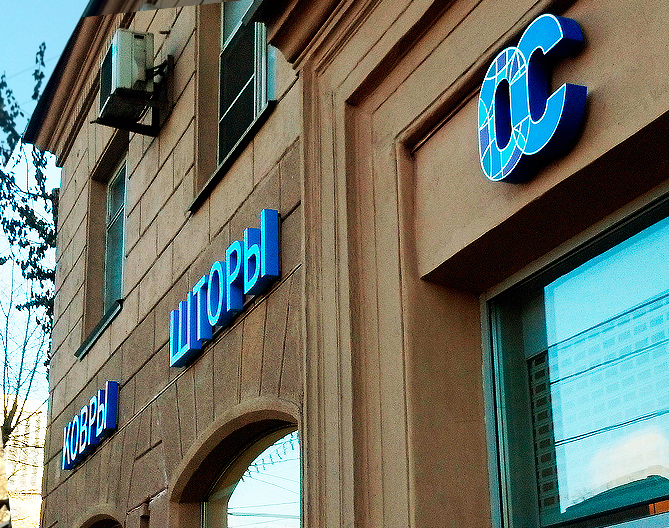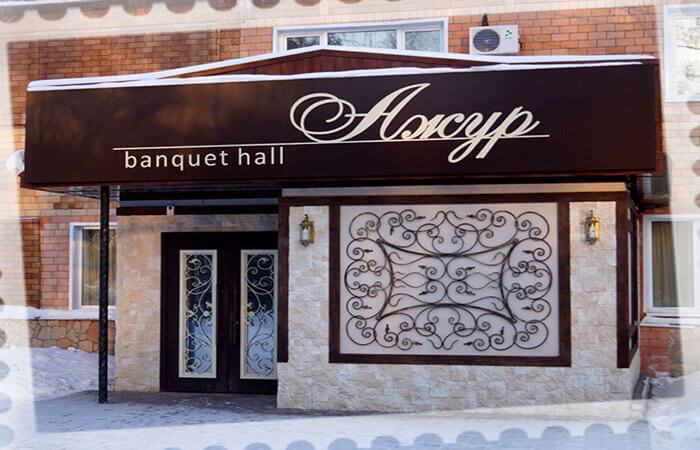It is difficult to imagine a modern city without huge signboards of shops and billboards. This is the oldest form of advertising. Signs on the facades of buildings appeared even before the invention of money. They were invented as soon as people began to exchange various goods.
The history of advertising signs

The first advertisement discovered by archaeologists was created in ancient Egypt. An inscription on the papyrus reported the sale of slaves. Later, advertising messages began to be carved on stone steles. At night, the holes in such plates were illuminated with oil lamps. Such devices can be considered the first light advertising.
In ancient Greece, signs on the facades of buildings were accompanied by advertising texts. In the Middle Ages, long texts lost their relevance. After all, most city dwellers were illiterate. Craftsmen hung on their homes and workshops the objects that they made. Over time, they were replaced by symbolic images and designs. They were made of metal and hung on the facade of the building using special brackets.
On the narrow and long streets of European cities, such symbols were most noticeable. In the 16th century, inscriptions with the names of shops and workshops began to be placed next to the structures.
Russian merchants used popular prints as signs on the facade of the building. Vivid images with witty inscriptions were considered the best way to promote goods.
With the development of trade, professional artists and sculptors began to be attracted to the production of advertising signs. They played an important role in promoting the Christian religion. In the 17th century, the receptions of the church were adopted by French advertising offices. Signs-paintings attracted a large number of customers. In the 19th century, font signs began to appear. In 1841, the first agency was opened in America, which was engaged in the creation of outdoor advertising.
Outdoor advertising development in Russia

In the 19th century, art workshops specializing in advertising signs appeared in St. Petersburg. After the revolution, advertising was almost monopolized by the state. Posters were drawn by hand and inserted into shop windows. The invention of electricity contributed to the creation of advertising lighting on the facades. The first light-dynamic panels began to produce in Germany.
In the USSR, light advertising was first used for posters. The Moscow factory of gas-illuminated advertising specialized in the production of advertising signs for shops and cinemas. Also, outdoor workshops were made by small workshops. But its quality left much to be desired. Often, neon tubes failed. Black holes appeared on the light signs. Many technologies used in Europe and the USA were not available in our country. Russian advertising gained real development during the years of perestroika. The development of trade and the opening of borders brought Russian advertising out of hibernation.
Sign or advertisement?

The Law "On Protection of Consumer Rights" obliges the owners of the organization to post business information on the facades. Entrepreneurs who did not post this information on the facade are subject to administrative liability in the form of a fine of up to 10 thousand rubles.
Advertising signs require approval. How to distinguish an advertising design from an information one? It is impossible to unequivocally answer this question. Entrepreneurs can focus on numerous decisions of the Russian courts on administrative matters.
A sign located on the facade of the organization is not considered an advertisement if it shows only the name, mode of operation and address. The inclusion of any other information in the text is considered advertising. An indication of the organization’s activities is also not considered advertising. The owner of the organization does not need to coordinate the placement of such a design.
Portable standards do not require special permission. Such signs indicate only the entrance to the building. They should not call a customer to make a purchase. Signs should not contain information about services, goods, prices and promotions. Indeed, in this case, they are considered advertising. It is also forbidden to place advertising images on signs. Roof installations of apartment buildings that do not indicate the location of the organization are also considered advertising.
Coordination of signs on the facade of the building

Placement of signs as advertising is possible after the conclusion of a written contract with the owner. Typically, a standard agreement is 10 years. The right to advertise on the facade of real estate owned by the municipality is obtained at auctions. When advertising on apartment buildings, a meeting of owners is held to discuss the following issues:
- the possibility of advertising;
- the choice of the person with whom the contract will be concluded on behalf of the residents;
- Terms of agreement.
A positive decision is made with the consent of at least 2/3 of all homeowners.
Documents

To obtain permission, the advertiser must contact the local government. A statement of the meeting of the residents of the house or the written consent of the owner of the building is attached to the application. If the applicant is the owner of the property, then permission is not required.
You will also need documents on the technical parameters and appearance of the advertising sign. This can be a sketch, a computer image of the structure or a diagram of the territory indicating the exact location of the advertisement. The applicant also has the right to apply for approval directly to the city architect and the improvement committee. The decision on approval or refusal of the placement must be made no later than 60 days from the date of application.
After concluding the contract, the advertiser must pay the state fee for issuing permission to place the structure.
A responsibility

Compliance with the law is monitored by local authorities and the FAS. In some cases, the Antimonopoly Service cancels the issued permit in case of violations. In this case, the advertiser must dismantle the structure. If the installer of the sign on the facade of the building is not defined, the owner of the premises will receive the order for dismantling. The advertiser has the right to appeal the decision within 90 days.
Placement of advertising without approval shall be sanctioned by a fine:
- for individuals - up to 1.5 thousand rubles;
- for organization managers - up to 5 thousand rubles;
- for legal entities - up to 1 million rubles.
Advertising agencies
The approval process takes time and some knowledge. Many entrepreneurs prefer to seek help from professional advertising agencies in building signboards on the building’s façade. As a rule, such organizations provide a wide range of services, which includes coordination of advertising with local authorities.
